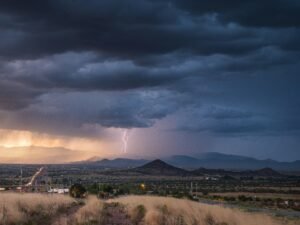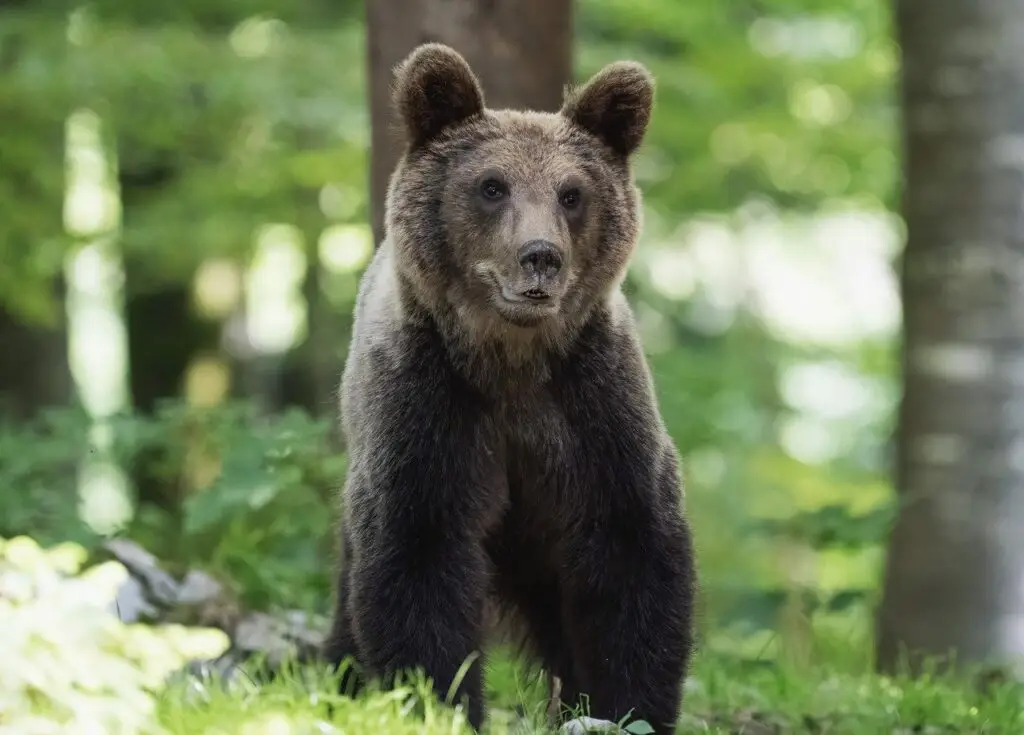While camping emergencies can sound scary, knowing what to do can make all the difference. Having a plan helps you stay calm, handle the situation, and get help if needed.
This guide will walk you through what to do in common camping emergency situations. Don’t worry—it’s all about being prepared, and with the right know-how, you can handle anything that comes your way.
Why Emergency Preparedness is Important
When you’re in the middle of the wilderness, even a small issue can feel like a big deal. Something that might seem minor at home, like a scraped knee or a missing phone signal, can feel overwhelming when you’re away from civilization. That’s why knowing some basic emergency responses is so helpful.
Even though it might feel like a lot to think about, it’s better to be over-prepared than caught off-guard. Plus, with the right preparation, you’ll feel more confident in your camping skills and ready for anything—whether it’s a leaky tent or a real emergency.
Basic Emergency Kit Essentials
Before we dive into specific emergencies, let’s talk about what you should pack to be prepared. Having the right gear can make a huge difference in an emergency. Here’s a basic list of what should be in your camping emergency kit:
First aid kit: This is a must! Make sure it includes adhesive bandages, antiseptic wipes, gauze, adhesive tape, tweezers, scissors, pain relievers, antihistamines, and any personal medications.
Emergency blanket: These lightweight blankets help retain body heat in case of hypothermia or other cold-weather emergencies.
Multitool or knife: Handy for everything from food prep to cutting ropes in a pinch.
Fire starter: Whether it’s waterproof matches, a lighter, or a fire starter tool, having a reliable way to start a fire is crucial.
Whistle: A whistle can help you signal for help if you get lost or need assistance.
Map and compass: While most of us rely on GPS, it’s smart to carry a physical map and compass as backup.
Water purification tablets or filter: Clean water is essential, especially if your trip takes longer than expected.
Extra food and water: Pack a little more than you think you’ll need, just in case.
Flashlight and extra batteries: A headlamp is also a great hands-free option.
Shelter: If you get stranded, an emergency tarp or bivy sack can provide temporary shelter.
Now, let’s get into some common emergency situations and what to do if they happen on your camping trip…
1. Medical Emergencies: Cuts, Burns, and Allergic Reactions
Storytime: I was out hiking a few summers ago when a girl in front of me lost her footing and snapped her ankle. Thankfully another hiker happened to be a medic and stayed with her while we went down to get a cell signal and call for help. Everything worked out but it was a reminder that you just never know what might happen out there. Be prepared.
Cuts and Scrapes
It’s pretty easy to get a small cut or scrape while hiking or setting up camp, especially when you’re dealing with sharp tools like knives. Here’s what to do:
1. Clean the wound: Use clean water to rinse out dirt or debris from the cut.
2. Disinfect: Use antiseptic wipes or solution (like hydrogen peroxide) from your first aid kit to clean the area.
3. Bandage it up: Apply gauze or a bandage to keep the cut clean and protected. Change the bandage if it gets dirty or wet.
If the cut is deep, doesn’t stop bleeding after 10 minutes, or is located in a sensitive area (like near the eye), it’s time to seek medical help.
Burns
Burns can happen around the campfire or when cooking. If you or someone else gets burned:
1. Cool the burn: Run the burn under cool (not cold) water for 10-15 minutes. If you’re out in the wilderness without running water, use clean water from your bottle or a stream.
2. Cover it: Once the burn has cooled, cover it with a sterile gauze bandage to protect it from dirt and further damage.
3. Avoid popping blisters: If the burn forms a blister, do your best to leave it alone. Popped blisters can lead to infections.
For more severe burns, or if the burn covers a large area of skin, seek medical attention right away.
Allergic Reactions
It’s not uncommon to encounter allergens in the outdoors, whether it’s bee stings, poison ivy, or food-related allergies. Knowing what to do in these situations is key.
Mild reactions: If someone develops a rash or mild itching, give them an antihistamine (like Benadryl). This should help ease the symptoms.
Severe reactions (anaphylaxis): If someone is having trouble breathing, swelling rapidly, or loses consciousness, it could be an anaphylactic reaction. Use an epinephrine injector (like an EpiPen) if available, and seek emergency help immediately.
If you or someone in your group has a known severe allergy, always carry an EpiPen or two and make sure others know where it is and how to use it.
2. What to Do if You Get Lost

Getting lost in the woods can happen no matter your level of experience. Here’s what to do:
1. Stay calm and stop moving: The worst thing you can do when you realize you’re lost is to keep wandering in the wrong direction. Stop, take a deep breath, and try to get your bearings.
2. Check your surroundings: Look around to see if there are any landmarks (like rivers, mountains, or distinct trees) that can help you figure out where you are.
3. Consult your map and compass: If you have a map and compass, use them to reorient yourself. Figure out which direction you came from and where you should be headed.
4. Mark your location: If you can’t find your way right away, mark your location with something noticeable (like a bright bandana or pile of rocks) so you can find your way back.
5. Use a whistle: Three blasts from a whistle is a universal distress signal. If you think others might be nearby, use your whistle to signal for help.
Finding Shelter
If it’s getting late or you’re unsure how long it will take to find your way back, it’s a good idea to set up shelter before dark. Use an emergency blanket or tarp to protect yourself from the elements. Make sure you have water and something to keep you warm through the night.
3. How to Handle Bad Weather

Bad weather can sneak up on you while camping, especially if you’re at higher elevations where the weather changes rapidly. From thunderstorms to sudden drops in temperature, knowing how to handle different weather conditions can keep you safe.
Thunderstorms
If you hear thunder or see lightning while camping, you need to take precautions right away:
Get to lower ground: Lightning strikes are more likely at higher elevations. If you’re on a ridge or peak, move down to a lower elevation quickly.
Stay away from tall objects: Avoid trees, poles, or other tall objects that could attract lightning. Find shelter in a low area, like a ravine or ditch, but avoid areas that could flood.
Stay dry: Wet ground or clothing can increase the risk of lightning strikes. If you’re caught in the rain, make sure to stay as dry as possible.
High Winds
High winds can be dangerous when camping, especially if you’re in an exposed area. Here’s what to do:
Secure your tent: Make sure your tent is properly staked down and that all guylines are tightened. You might also want to place rocks or heavy items inside to weigh it down.
Watch for falling branches: If you’re camping near trees, be cautious of falling branches in strong winds. It might be necessary to relocate to a more open area if you hear or see branches coming down.
Seek shelter: If the winds are too strong, retreat to your vehicle (if you have one) or find a natural windbreak, like large rocks or a cave.
4. Hypothermia and Heat Exhaustion
Camping in extreme temperatures can be challenging, especially for beginners. Whether you’re dealing with cold or hot conditions, here’s what to watch for and how to handle it.
Hypothermia
Hypothermia occurs when your body temperature drops too low, usually due to exposure to cold weather, wet conditions, or wind. Signs of hypothermia include shivering, confusion, slurred speech, and clumsiness.
Here’s how to handle it:
1. Get out of the cold: If someone in your group shows signs of hypothermia, move them into shelter as quickly as possible. If you don’t have a tent or cabin, use an emergency blanket to cover them.
2. Warm them up: Remove any wet clothing and replace it with dry layers. If possible, give the person warm (not hot) fluids like tea or soup.
3. Monitor closely: Hypothermia can be serious, so if the person doesn’t seem to be improving, seek medical help immediately.
Heat Exhaustion
On the flip side, hot weather can lead to heat exhaustion, which happens when your body overheats. Signs of heat exhaustion include heavy sweating, weakness, dizziness, and nausea.
Here’s what to do:
1. Move to shade: Get the person out of direct sunlight and into a shaded or cooler area.
2. Hydrate: Encourage them to drink water or a sports drink to replenish lost fluids and electrolytes.
3. Cool down: Use cool, damp cloths or a wet bandana to help lower their body temperature.
If symptoms don’t improve or worsen (especially if the person stops sweating), they may be experiencing heat stroke, which requires immediate medical attention.
5. Animal Encounters

While most animals in the wild won’t bother you, it’s important to know what to do if you encounter one. The goal is always to avoid attracting animals to your campsite, but if you do have a run-in with wildlife, staying calm is key.
Bears
If you spot a bear near your campsite, don’t panic. Bears are usually more interested in your food than in you.
Stay calm and make noise: Talk loudly and wave your arms to make yourself look bigger. Most bears will avoid humans if they realize you’re there.
Back away slowly: Don’t run. Instead, slowly back away while keeping an eye on the bear.
Use bear spray: If the bear approaches and seems aggressive, use bear spray as a last resort. Aim for the bear’s face and eyes.
Snakes
Snakes are another animal you might encounter while camping. Most are harmless, but it’s good to know what to do if you spot one.
Give them space: Snakes usually won’t bother you if you leave them alone. If you see one, give it a wide berth and move away calmly.
If bitten: If you’re bitten by a snake, especially a venomous one, keep calm and seek medical help immediately. Keep the bite area lower than your heart and avoid moving too much to slow the spread of venom.
Conclusion: Be Prepared, Stay Calm
Camping emergencies can happen, but with the right knowledge and preparation, you’ll be ready to handle them like a pro. Whether it’s a sudden storm, an animal encounter, or getting lost on the trail, staying calm and knowing what to do can turn a potentially stressful situation into a manageable one.
By packing the right emergency gear, understanding basic first aid, and keeping a cool head, you’ll be ready for anything the wilderness throws your way. So, go ahead—plan that camping trip, enjoy the great outdoors, and rest easy knowing you’ve got the skills to handle whatever comes your way.
Happy (and safe) camping!
Explore more. Fear less.
- Why Road Trips are One of the Best Ways to Clear Your Mind - November 21, 2024
- 10 of the Best Pumpkin Patches in the U.S. - October 23, 2024
- 10 of the Most Colorful Fall Road Trips in the U.S. - October 22, 2024
